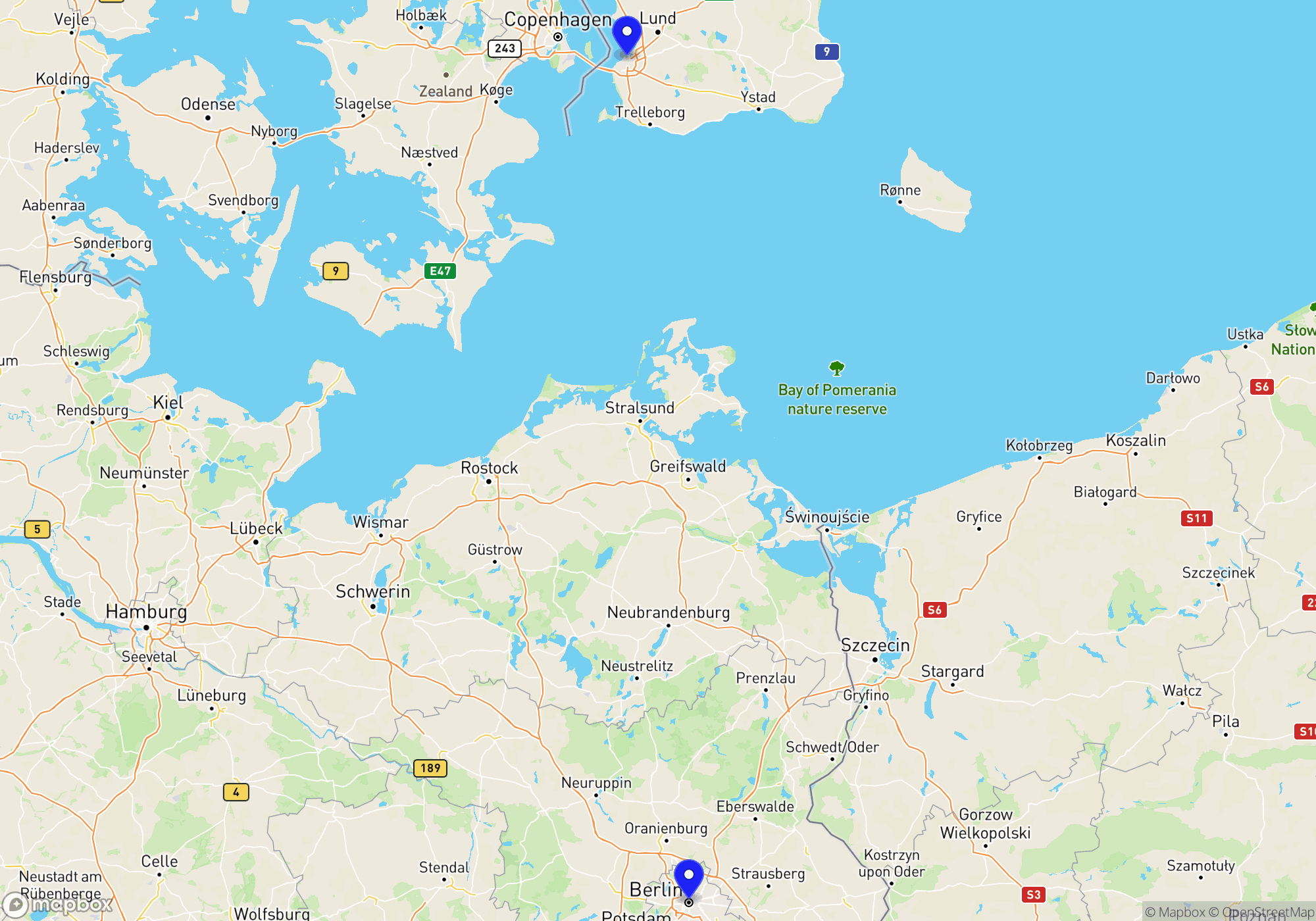
You can buy train tickets directly from the operator or through a reseller. The reseller is typically slightly more expensive (3-5%) but can provide an easier booking experience, especially if you travel with more than one operator.


These operators provide a complete journey either as a direct connection or through their partners. Even if a change of trains is involved, it’s all part of a single itinerary managed by the same train company or its partners, offering a smoother and more coordinated travel experience.

Some operators don’t run direct trains the whole way, but they serve either the departure or arrival station. In many cases, you can combine two of these operators to complete your journey by changing trains along the way. This is often a flexible and budget-friendly way to travel — especially if you’re comfortable piecing together your own itinerary.
Just keep in mind that these are separate journeys, which means a delay on the first leg could cause you to miss the second without automatic compensation or rebooking. It’s a great option for confident travelers who don’t mind a bit of extra planning.




As of my last update, FlixBus is primarily known as a long-distance bus company across Europe, rather than a rail operator. However, they have expanded their offerings to include train services in certain regions under the FlixTrain brand. FlixTrain operates primarily in Germany with routes extending to a few neighboring countries. FlixTrain offers comfortable seating with basic amenities aimed at providing an economical travel experience. The trains typically feature a range of seating options, including standard and more spacious seats. Their amenities generally include free Wi-Fi, access to power outlets at each seat, and a selection of snacks and beverages available for purchase. FlixTrain aims to deliver a straightforward and efficient travel experience, emphasizing low-cost tickets and environmental sustainability.
Regarding customer support, FlixBus (and by extension, FlixTrain) is known for its user-friendly app and website, which facilitate easy booking and provide real-time updates for travelers. Their customer service is accessible via multiple channels, including a hotline and email support, and they often incorporate chat support through their mobile app. It is advisable for first-time travelers to download the app for seamless navigation and prompt notifications concerning their journey. As always, schedules and services may change, and it is best to confirm the latest details directly from the company’s official platforms close to the time of travel.
The Interrail Global Pass is valid for traveling by train from Malmö to Berlin, offering flexibility for inter-country travels in Europe, provided the traveler is a resident of an EU country other than Sweden or Germany. The Interrail One Country Pass is not applicable for this route as it covers travel within a single country, and this journey involves crossing from Sweden to Germany. The Eurail Pass, suitable for non-EU residents, is also valid for this international trip from Malmö to Berlin.
Arriving in Berlin by train, you’ll likely enter the city through one of its main railway stations like Berlin Hauptbahnhof. From there, Berlin’s efficient and diverse local transportation system makes it easy to get around. The U-Bahn (metro) and S-Bahn (suburban trains) are the backbone of Berlin’s public transport and cover most areas of the city. Both networks are integrated, and trains run frequently, with clear signage in both German and English. Trams are available primarily in the eastern parts of the city, offering a scenic way to travel short distances, especially between key districts. Buses fill in the gaps where metro and trams don’t reach, and night buses operate just after public transit shuts down. Taxis are readily available and can be hailed on the street, at taxi stands, or booked via apps. Ridesharing services like Uber and Bolt also operate in Berlin, providing convenient point-to-point transport. Tickets for public transit are valid across buses, trams, U-Bahn, and S-Bahn, and can be purchased at vending machines, kiosks, or via the BVG app. Be sure to validate your ticket before boarding, as ticket inspections are common.
Berlin is a central hub for train travel in Europe, offering numerous domestic and international rail connections. Domestically, the Deutsche Bahn operates extensive services from Berlin to major German cities. The ICE (Intercity-Express) trains provide rapid connections to cities like Hamburg, Munich, Frankfurt, and Cologne, often departing from Berlin Hauptbahnhof. These high-speed trains typically offer comfortable seating in both standard and first-class, with amenities like Wi-Fi and catering services. For visitors looking to explore regional destinations, Berlin is well-connected to cities like Leipzig and Dresden through IC (Intercity) and regional RE (Regional Express) trains.
Internationally, Berlin serves as a gateway to several European capitals and key cities. Direct EuroCity (EC) trains link Berlin with Warsaw, Poland, offering a convenient journey across the Polish border. Another popular connection is to Prague, Czech Republic, with several EC trains daily providing scenic routes through the countryside. Travelers heading to Switzerland can reach Zurich with a combination of ICE and EC services, typically involving a change at a key station like Frankfurt. Additionally, Berlin’s connection to Vienna, Austria, is facilitated by direct Railjet services via the ÖBB (Austrian Federal Railways), enhancing the convenience for travelers seeking to explore Central Europe. These international routes are complemented by sleeper trains, such as those operated by the Nightjet service, offering overnight travel options to cities like Vienna and Zurich, which provide a restful and efficient travel experience.
The best time to visit Berlin largely depends on what you’re looking to experience, but generally, late spring (May and June) and early autumn (September and October) are excellent periods. During these months, the weather is mild and pleasant, perfect for outdoor activities and sightseeing. Prices for accommodation and travel can be more affordable compared to the peak summer season. In May and June, you can enjoy long daylight hours and events like the Karneval der Kulturen and Berlin Biennale. September and October offer a vibrant cultural scene with the Berlin Art Week and Oktoberfest celebrations, albeit less crowded than the Bavarian counterpart. Train travel to Berlin during these weeks is often less expensive than the height of summer, with fewer tourists on board and a greater availability of seats. Winter can be magical too, with Christmas markets and festive decorations, but temperatures can be quite cold, and daylight hours are shorter, which might limit outdoor activities. However, for those who love the winter atmosphere, late November and December are perfect for soaking in Berlin’s holiday spirit.
When traveling from Malmö to Berlin by train, it is essential to pack a valid passport or national ID card for EU citizens, and a visa if required for non-EU travelers. Bring a train ticket or a digital confirmation of your reservation. Pack a plugged power adapter if your devices have a different plug type, as Germany uses Type C and F plugs. Carry a portable charger to ensure your electronics stay powered during the journey. A European Health Insurance Card (EHIC) is advisable for healthcare needs in Europe. Bring comfortable clothing and a light jacket for varying weather conditions, along with appropriate footwear for exploring Berlin. Snacks and a reusable water bottle will keep you refreshed on the train. Have essential toiletries and any personal medication you might need. Consider travel guides or maps of Berlin to help navigate the city. A small phrasebook or a translation app could assist with communication. Lastly, headphones and entertainment options like books or magazines can make the train journey more enjoyable.